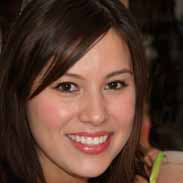Chapter 14 Mastering Biology Answers – Flashcards
Unlock all answers in this set
Unlock answersquestion
Part A - Determining the mode of inheritance The pedigrees below show the inheritance of three separate, rare autosomal conditions in different families. For each pedigree, decide if the condition is better explained as recessive or dominant. Drag the correct label to the appropriate location. Labels can be used once, more than once, or not at all.
answer
Pedigree 1: Autosomal Dominant Condition Pedigree 2: Autosomal Dominant Condition Pedigree 3: Autsomal recessive Condition
question
Part B - Determining genotypes in autosomal dominant pedigrees Pedigree 2 from Part A is shown below. Recall that this pedigree shows the inheritance of a rare, autosomal dominant condition. Fill in the genotypes for the indicated individuals in the pedigree by dragging the best label to the appropriate location. Labels can be used once, more than once, or not at all.
answer
I (Straight Across): Dd II (Straight Across): 1.) Dd, 2.) dd, 4.) Dd III(Straight Across): 2.) dd, 3.) Dd, 4.) dd
question
Part C - Determining genotypes in autosomal recessive pedigrees Pedigree 3 from Part A is shown below. Recall that this pedigree shows the inheritance of a rare, autosomal recessive condition. Note that individual II-3 has no family history of this rare condition. Fill in the genotypes for the indicated individuals in the pedigree by dragging the best label to the appropriate location. Labels can be used once, more than once, or not at all
answer
I (Straight Across): 1.) rr II (Straight Across): 1.) Rr, 3.) RR, 4.) Rr III(Straight Across): 2.) R_ ,3.) R_ , 4.) R_
question
Part C - Determining genotypes in autosomal recessive pedigrees Pedigree 3 from Part A is shown below. Recall that this pedigree shows the inheritance of a rare, autosomal recessive condition. Note that individual II-3 has no family history of this rare condition. Fill in the genotypes for the indicated individuals in the pedigree by dragging the best label to the appropriate location. Labels can be used once, more than once, or not at all
answer
I (Straight Across): 1.) rr II (Straight Across): 1.) Rr, 3.) RR, 4.) Rr III(Straight Across): 2.) R_ ,3.) R_ , 4.) R_
question
Individuals III-3 and III-4 are expecting their first child when they become aware that they both have a family history of this recessive condition. As their genetic counselor, you can calculate the probability that they are carriers and that their child will be affected with the condition. Complete each statement by dragging the correct label to the appropriate location. Labels can be used once, more than once, or not at all.
answer
1.) Probability that III-3 is a carrier (Rr): 2/3 2.) Probability that is a carrier III-4 is a carrier (Rr): 1/2 3.) Probability that IV-1 will be affected (rr): 1/12
question
Part A - Calculating the expected number of each phenotype In cosmos plants, purple stem (A) is dominant to green stem (a), and short petals (B) is dominant to long petals (b). In a simulated cross, AABB plants were crossed with aabb plants to generate F1 dihybrids (AaBb), which were then test crossed (AaBb X aabb). 900 offspring plants were scored for stem color and flower petal length. The hypothesis that the two genes are unlinked predicts the offspring phenotypic ratio will be 1:1:1:1. Using the ratio of 1:1:1:1, calculate the expected number of each phenotype out of the 900 total offspring. Drag the correct values onto the data table. Labels may be used once, more than once, or not at all.
answer
Expected # of offspring(900): 225, 225, 225, 225.
question
Part B - Calculating the ?2 statistic The goodness of fit is measured by ?2. This statistic measures the amounts by which the observed values differ from their respective predictions to indicate how closely the two sets of values match. The formula for calculating this value is ?2=?(o?e)2e where o = observed and e = expected. The expected and observed data have been entered into the table below. Carry out the operations indicated in the top row. In the last column, enter your answers to two decimal places. Then add up the entries in the last column to find the ?2 value.
answer
Deviation (o-e); (o-e)^2; (o-e)/e; X2 Sum -5 25 0.11 2.14 -15 225 1 6 36 0.16 14 196 0.87
question
Part B - Calculating the ?2 statistic The goodness of fit is measured by ?2. This statistic measures the amounts by which the observed values differ from their respective predictions to indicate how closely the two sets of values match. The formula for calculating this value is ?2=?(o?e)2e where o = observed and e = expected. The expected and observed data have been entered into the table below. Carry out the operations indicated in the top row. In the last column, enter your answers to two decimal places. Then add up the entries in the last column to find the ?2 value.
answer
Deviation (o-e); (o-e)^2; (o-e)/e; X2 Sum -5 25 0.11 2.14 -15 225 1 6 36 0.16 14 196 0.87
question
Part B - Calculating the ?2 statistic The goodness of fit is measured by ?2. This statistic measures the amounts by which the observed values differ from their respective predictions to indicate how closely the two sets of values match. The formula for calculating this value is ?2=?(o?e)2e where o = observed and e = expected. The expected and observed data have been entered into the table below. Carry out the operations indicated in the top row. In the last column, enter your answers to two decimal places. Then add up the entries in the last column to find the ?2 value.
answer
Deviation (o-e); (o-e)^2; (o-e)/e; X2 Sum -5 25 0.11 2.14 -15 225 1 6 36 0.16 14 196 0.87



